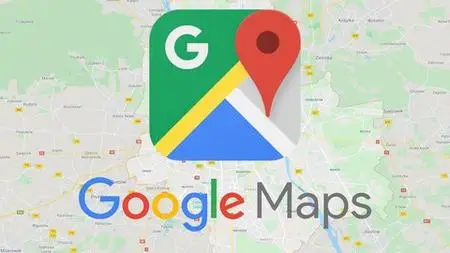Mastering Google Maps Javascript Api: A Comprehensive Guide
Published 12/2023
MP4 | Video: h264, 1920x1080 | Audio: AAC, 44.1 KHz
Language: English | Size: 867.13 MB | Duration: 1h 24m
Published 12/2023
MP4 | Video: h264, 1920x1080 | Audio: AAC, 44.1 KHz
Language: English | Size: 867.13 MB | Duration: 1h 24m
The complete guide of Google Maps JavaScript APIs from A to Z
What you'll learn
How to set up and integrate the Google Maps JavaScript API into web applications.
Key concepts related to maps, markers, and geolocation.
Customizing the appearance of maps, including map styles, themes, and controls.
Adding custom markers, icons, and info windows to maps.
Adding interactivity to maps, such as click events and user interactions.
Implementing features like zooming, panning, and street view.
Loading and displaying geographic data in GeoJSON format on maps.
Building interactive maps with data overlays.
Identifying and addressing common issues and errors in API usage.
Requirements
Just basics of JavaScript
Description
In a course focused on the Google Maps JavaScript API, students can expect to learn a range of skills and knowledge related to utilizing this powerful mapping tool for web development. The specific learning outcomes will depend on the course's depth and duration, but here are some common topics and skills that students can expect to gain:Understanding the Basics:How to set up and integrate the Google Maps JavaScript API into web applications.Key concepts related to maps, markers, and geolocation.Map Customization:Customizing the appearance of maps, including map styles, themes, and controls.Adding custom markers, icons, and info windows to maps.Interactive Maps:Adding interactivity to maps, such as click events and user interactions.Implementing features like zooming, panning, and street view.Working with GeoJSON Data:Loading and displaying geographic data in GeoJSON format on maps.Building interactive maps with data overlays.Error Handling and Troubleshooting:Identifying and addressing common issues and errors in API usage.Best Practices and Optimization:Ensuring efficient and optimized use of the API to improve website performance.Handling API rate limits and billing considerations.By the end of the course, students should be well-equipped to integrate Google Maps into their web applications, build location-aware features, and customize maps to meet their specific needs. They will also have a solid foundation for exploring more advanced applications of the Google Maps JavaScript API in their projects.
Overview
Section 1: Introduction
Lecture 1 Getting start with Google Maps Platform
Lecture 2 Create and use API key
Lecture 3 First Web Mapping Application
Lecture 4 SampleCode: First Web Mapping Application
Section 2: Map Options
Lecture 5 Understand the Map Options
Lecture 6 Manage UIContorls with Map Options
Lecture 7 SampleCode: Manage UIContorls with Map Options
Lecture 8 Change Google Map Types
Lecture 9 SampleCode: Change Google Map Types
Lecture 10 Change Map Localization
Lecture 11 SampleCode: Change Map Localization
Section 3: Geometries and Overlays
Lecture 12 Draw Geometries and Overlays on the Map
Lecture 13 Draw Point Geometry (Markers) on the Map
Lecture 14 SampleCode: Draw Point Geometry (Markers) on the Map
Lecture 15 Draw Shape Geometry (Polyline) on the Map
Lecture 16 SampleCode: Draw Shape Geometry (Polyline) on the Map
Lecture 17 Draw Shape Geometry (Polygon) on the Map
Lecture 18 SampleCode: Draw Shape Geometry (Polygon) on the Map
Lecture 19 Add a Ground Overlay (Raster) to the Map
Lecture 20 SampleCode: Add a Ground Overlay (Raster) to the Map
Section 4: Map Events
Lecture 21 Interact with Map Events
Lecture 22 SampleCode: Interact with Map Events
Lecture 23 Display Map Info Windows
Lecture 24 SampleCode: Display Map Info Windows
Lecture 25 Displaying User or Device Position on Maps
Lecture 26 SampleCode: Display User or Device Position On Maps
Section 5: Geospatial Data Layers
Lecture 27 Understand Geospatial Data Layers
Lecture 28 Display Data Layer on a The Map
Lecture 29 Sample Code: Display Data Layer on The Map
Lecture 30 Listen to Data Layer Events
Lecture 31 SampleCode: Listen to Data Layer Events
Lecture 32 Style Data Layer Features
Lecture 33 SampleCode: Style Data Layer Features
web developers



